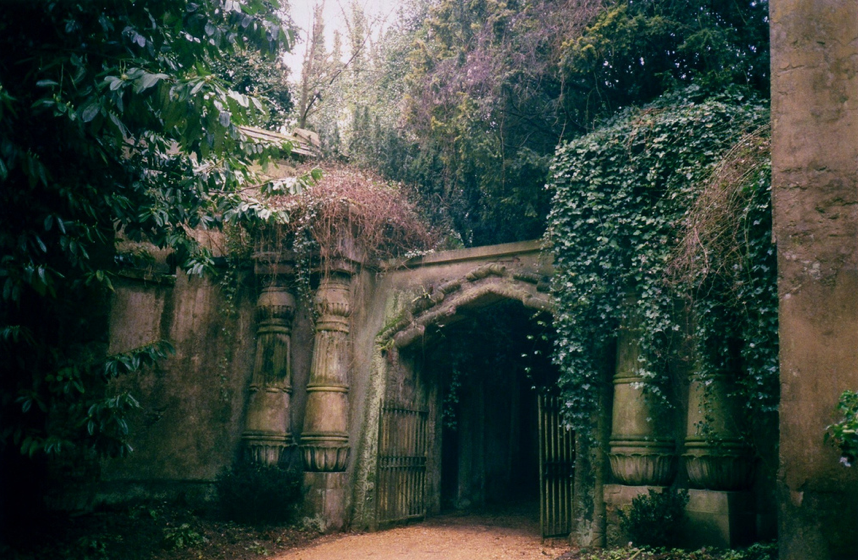In the late 19th, early 20th century there was a revival of the use of symbolic meanings of plants and flowers. Nature seemed to be a forest of symbols, and flowers were saturated with deeper meanings.
Jewelry was often imbued with the meanings of the times. The romantic facet of ivy is based upon its tendrils which attach itself to a wall, a gold necklace made of ivy might be given to a coutesan while saying,
"Je m'attache ou je meurs" which (freely) translates to "I will cling to you or I will die"....
During the Renaissance, nature was viewed as a reflection of the divine. Botanical symbolism was included in much of the religious art of the day and medieval gardens were often created with both symbolic and spiritual meanings. In the late Middle Ages, depictions of the Virgin Mary in an idealized garden were common in Flemish and German paintings. The flowers in these gardens symbolized Mary’s virtues and significant events in her life. Some churches began creating actual gardens devoted to Mother Mary for worshipers to visit for meditation and prayer. Flowers that could be grown in such “Mary Gardens” included the following: Christmas rose-purported to have flowered on Christmas Day; daisy-symbolic of purity and simplicity; iris-the blade shaped foliage denoting the sorrows that ‘pierced her heart’; lady’s mantle-likened to a cloak for the Blessed Virgin; lily-associated with the annunciation of the birth of Jesus by the angel Gabriel; marigold-’Mary’s Gold’, golden gifts offered to the Virgin by the poor. Although the legendary associations and religious meanings of flowers have existed for centuries, the specific symbolic meaning of particular flowers to represent emotions was developed to a high degree during Victorian times. Due to the strict protocol of the times, emotions, wishes and thoughts were not openly expressed between men and women. Instead, an elaborate language based on flower meanings was developed. Both gifts of single flowers and bouquets conveyed clear messages to the recipient. With the increasing complexity of the language of flowers, handbooks were written to guide the understanding of flower meanings. The first book written on the subject in modern times was Le Language des Fleurs by Madame Charlotte de la Tour in 1819. The most popular book on the subject, which remains a prominent resource today, is Kate Greenaway’s Language of Flowers (1884).
Flowers are still used today to convey feelings in a more general way. Modern flower meanings include the following: bluebells-symbolic of humility and gratitude; foxglove-symbolic of both healing and insincerity; lupines-symbolic of the imagination; marigolds-symbolic of passion and creativity; poppies-symbolic of beauty, magic, and eternal life; sweet peas-symbolic of bliss and delicate pleasure; zinnias-thoughts of absent friends, lasting affection and constancy.
Flowers are still used today to convey feelings in a more general way. Modern flower meanings include the following: bluebells-symbolic of humility and gratitude; foxglove-symbolic of both healing and insincerity; lupines-symbolic of the imagination; marigolds-symbolic of passion and creativity; poppies-symbolic of beauty, magic, and eternal life; sweet peas-symbolic of bliss and delicate pleasure; zinnias-thoughts of absent friends, lasting affection and constancy.
An extensive list can be found on Wikipedia "Symbolic Meaning of Flowers"
and
Flowers Symbolism List from Collier's Cyclopedia of Commercial and Social Information and Treasury of Useful and Entertaining Knowledge, compiled by Nugent Robinson. P.F. Collier, 1882








0 comments:
Post a Comment